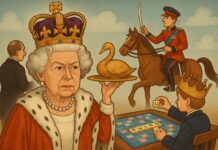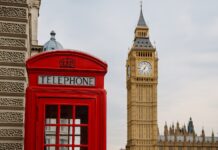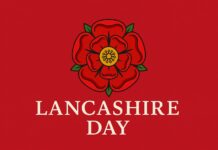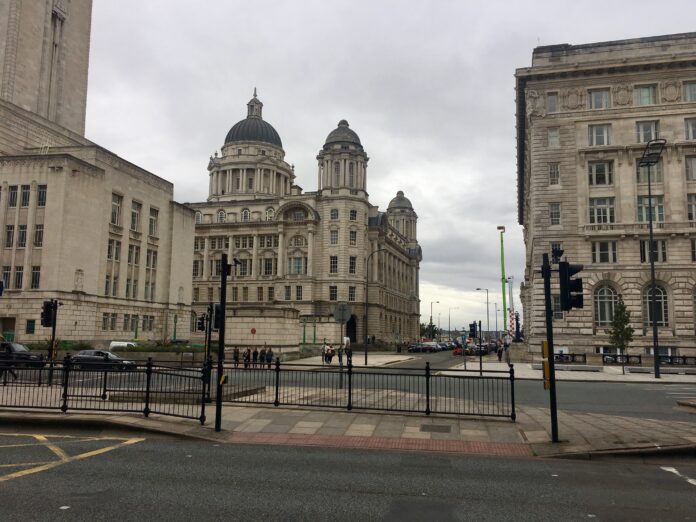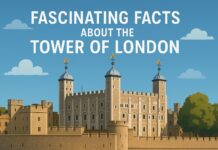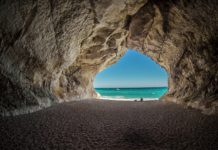Liverpool is a Northwest England city located on the Mersey Estuary’s eastern side. It has a population of around 498,000 people.
Liverpool has a rich history going back over 800 years. It was founded in the 12th century and grew rapidly as a major port city. During the 18th and 19th centuries, Liverpool was a key centre for trade and migration between Europe and the Americas. It was also an important industrial city.
Today, Liverpool is known for its vibrant culture, architecture, music, and sporting heritage. Major attractions include the Royal Albert Dock, Tate Liverpool Art Gallery, Merseyside Maritime Museum, The Beatles Story Museum, and Anfield and Goodison Park football stadiums. The city is famous for The Beatles, formed and based in Liverpool.
For shopping, Liverpool One is a large open-air shopping centre in the city’s heart. Liverpool also has a lively nightlife scene with many bars, pubs and music venues located in the Ropewalks area.
The city has good transportation links. It is served by Liverpool John Lennon Airport and two major train stations. Nearby places include the seaside resort of Southport, the Roman city of Chester, and Manchester.
99 Historical and Interesting Facts about Liverpool, UK
- Liverpool is a city in Merseyside, England. It lies on the eastern side of the Mersey Estuary. Liverpool is located in the Northwest of England, along the eastern side of the Mersey Estuary.
- Liverpool’s origins date back to 1207, when King John granted it a royal charter. In the early 13th century, around the year 1207, Liverpool received its royal charter, a formal document granting it the status of a borough.
- The city’s name is believed to come from the Old English words “lifer” (meaning thick or muddy water) and “pōl” (meaning pool).
- The Liverpool and Manchester Railway opened in 1830, was the world’s first regularly scheduled passenger and freight railway service that connected Liverpool’s Crown Street to Manchester’s Liverpool Road. Liverpool used to have an overhead railway, but it was damaged in World War Two and never repaired. The city’s main railway station is Liverpool Lime Street station.
- Liverpool’s population is approximately 498,042, making it the tenth-largest city in the UK. The Metropolitan County of Merseyside, the largest city of Liverpool, had a population of over 1.4 million. The city has a diverse population, with various ethnicities and cultures represented.
- The Titanic, which famously sank in 1912, was registered in Liverpool, and many of its crew members hailed from the city.
- Liverpool has the fifth largest GDP of any UK city at £121 billion. Liverpool’s metropolitan economy is the largest outside of London, with £121 billion GVA.
- Liverpool was the departure point for countless emigrants leaving for the United States, particularly during the Irish potato famine in the mid-19th century.
- Liverpool is the birthplace of the Beatles, the most commercially successful band in history. The Beatles, one of the most famous bands in the world, originated in Liverpool in the early 1960s.
- Liverpool has more galleries and national museums than any other city outside London.
- Liverpool is among the few UK cities frequently mentioned in hit songs due to its rich musical heritage and global influence. The city’s prominence in music is primarily attributed to The Beatles, one of the most iconic bands in history, who hailed from Liverpool. Their groundbreaking music and the city’s vibrant music scene inspired numerous songwriters worldwide. Hits like “Ferry ‘Cross the Mersey” by Gerry and the Pacemakers and “Penny Lane” and “Strawberry Fields Forever” by The Beatles themselves prominently feature Liverpool’s landmarks, creating a lasting musical legacy that continues to evoke the city’s charm in popular music.
- During World War II, Liverpool played a critical role as a major port and was heavily bombed by the Luftwaffe in the Blitz.
- Liverpool is home to two Premier League football clubs – Liverpool FC and Everton FC.
- The River Mersey divides Liverpool into two main areas – the city centre and Sefton. The River Mersey flows through Northwest England, dividing cities like Liverpool and Manchester. It’s a significant waterway in the region, known for its historical role in trade and transportation. The river is about 70 miles long and empties into the Irish Sea. Its name comes from an old word meaning “boundary river.” The Mersey has been essential for shipping goods and played a crucial part in the growth of the cities along its banks. Today, it remains an important waterway for recreation and transportation.
- The world’s first set of all-female sextuplets was born on Friday, November 18, 1983, at Oxford Street Maternity Hospital in Liverpool, England, to Graham and Janet Walton of Wallasey. Watch as our reporter Claire meets Jan at Liverpool Women’s Hospital.
- Liverpool has six areas designated as UNESCO World Heritage Sites.
- Liverpool has a maritime history and was once one of the busiest ports in the British Empire.
- Liverpool’s local nickname is ‘The Pool’. This refers to a deep tidal pool in the River Mersey. The Liverpool accent is referred to as Scouse.
- Liverpool has warm summers and mild winters. It rarely snows heavily in the city.
- Liverpool’s waterfront is a UNESCO World Heritage Site, featuring iconic landmarks like the Liver Building and the Royal Liver Building. The Albert Dock consists of a complex of dock buildings and warehouses located on Liverpool’s waterfront.
- Liverpool was home to the first School for the Blind, opening in 1791.
- Liverpool John Lennon Airport serves Liverpool. Liverpool John Lennon Airport is located 7.5 miles from Liverpool city centre. Liverpool Airport was previously called Speke Airport after the area it is located in.
- Anfield Stadium is the home of Liverpool FC. It was built in 1884.
- Liverpool is twinned with Cologne, Germany and Dublin, Ireland.
- Liverpool Central Library is the largest lending library in Europe.
- Liverpool Castle was once a notable landmark, even though no physical remnants remain today. It was located in Liverpool’s city centre, near the modern-day Derby Square. Built-in the early 13th century, the castle protected the city and its port. However, it was demolished during the 18th century, and its materials were used for other buildings. While Liverpool Castle is gone, its historical significance in safeguarding the city’s early development is remembered in local history.
- The Royal Liverpool Philharmonic Orchestra give regular concerts in their home concert hall.
- Liverpool has two cathedrals – Liverpool Cathedral (Church of England) and Liverpool Metropolitan Cathedral (Roman Catholic). The city is home to the Liverpool Metropolitan Cathedral, which is the largest Roman Catholic cathedral in England.
- Liverpool ONE is a large open-air shopping complex located in the city centre.
- Liverpool has its own local delicacy – scouse stew. This is a lamb or beef stew. Liverpool’s local delicacy scouse comes from lobscouse, a stew commonly eaten by sailors.
- Liverpool was voted the Capital of Pop by Guinness World Records.
- The Liverpool Empire Theatre opened in 1925 and hosts musicals, comedies and other performances.
- Liverpool John Moores University has over 20,000 students enrolled.
- The Beatles played The Cavern Club in Liverpool 292 times from 1961 to 1963. Liverpool is home to the Cavern Club, where the Beatles played early in their career.
- Liverpool has three universities – Liverpool University, Liverpool John Moores University and Liverpool Hope University. The University of Liverpool, founded in 1881, is one of the city’s prominent educational institutions.
- The Bullring is an old shopping area located in Liverpool city centre.
- It is England’s most successful footballing city, with 20 major trophies won by its two teams, Liverpool and Everton.
- Liverpool’s local delicacy of scouse stew inspired the Liver Birds name – the cormorants that inhabit the local waters. The city’s coat of arms features a liver bird, a mythical creature that is said to bring good luck.
- The Queensway Tunnel connects Liverpool with Birkenhead under the River Mersey. It opened in 1934.
- Liverpool is home to the oldest Black African community in Britain. The oldest Black African community in Liverpool is Toxteth, which is special because it has a long and rich history. People from Africa first came to Liverpool long ago, and many settled in Toxteth. Toxteth is located south of Liverpool, close to the city centre. They’ve played a big part in Liverpool’s history and remain an important part of the city’s identity.
- St George’s Hall on Lime Street was completed in 1854. St. George’s Hall is a famous building in Liverpool, located on Lime Street. It’s important because it’s a historic place where many special events happen. The hall was built a long time ago, in the 19th century, and it looks super grand with big columns in front. Inside, there’s a big concert hall and a beautiful courtroom. People often come here for concerts, weddings, and important meetings. The hall is famous for its impressive architecture and beautiful sculptures. It’s also near Lime Street Station, making it easy for people to visit.
- Liverpool is home to the Royal Court Theatre – the oldest still running theatre in the UK.
- The Metropolitan Cathedral of Christ the King is known locally as Paddy’s Wigwam due to its shape.
- Liverpool has its local TV channel – Bay TV Liverpool.
- Anfield Stadium took its name from the surrounding area in Liverpool.
- The Mersey Ferry connects Liverpool with the Wirral peninsula.
- The Liverpool Football Club is one of England and Europe’s most successful football clubs.
- The Radio City Tower is a radio and observation tower built in 1969.
- It was the first city in the UK to have an air-conditioned building.
- Liverpool’s Chinatown has the largest Chinese arch outside China. The oldest Chinatown in Europe is located in Liverpool.
- The Liverpool Wheel opened in 2010 but was dismantled in 2017.
- Liverpool has three hospitals run by the NHS – Aintree University Hospital, Liverpool Women’s Hospital and the Royal Liverpool University Hospital.
- William Gladstone, four-time British Prime Minister in the 1800s, was MP for Liverpool.
- Liverpool has its own orchestra, choir, ballet and opera companies.
- Liverpool has its own local newspaper – the Liverpool Echo. Liverpool’s local newspaper, the Echo, was published by seven year olds during a strike in 1919. Liverpool’s local newspaper, the Echo, was founded in 1879.
- Liverpool FC’s ground, Anfield was originally the home of Everton FC before they moved to Goodison Park.
- Beatlemania was coined by the press in 1963 to describe Beatles fandom. The Beatles’ first single, “Love Me Do,” was released in 1962. It reached number 17 in the UK charts.
- Liverpool is twinned with Surabaya in Indonesia and Medan in Indonesia.
- Liverpool’s Anglican Cathedral is the largest in Britain and the fifth largest in the world.
- Liverpool has three major universities: Hope University and Liverpool Institute for Performing Arts.
- The Liverpool council area has six parliamentary constituencies.
- The oldest building in Liverpool is the Ancient Chapel of Toxteth, built around 1515.
- The tourist board for the Liverpool area is known as Visit Liverpool.
- 20 Forthlin Road is the childhood home of Paul McCartney and is now a National Trust property.
- Liverpool has produced numerous famous bands and artists, including Echo and the Bunnymen.
- Liverpool is home to Aintree racecourse which hosts the famous Grand National horse race.
- Liverpool has three large parks within the city – Sefton Park, Calderstones Park and Stanley Park.
- The Merseyrail network serves Liverpool with nearly 80 train stations in the area.
- The Royal Liver Building opened in 1911 and has two fabled Liver Birds on top of its towers. The Liver Building is one of Liverpool’s most iconic landmarks. It is a Grade I listed building and was completed in 1911.
- Liverpool John Moores University was previously called Liverpool Mechanics’ School of Arts.
- William Brown Street is known as Liverpool’s cultural quarter, home to museums and galleries.
- Liverpool has a rich sporting history – it held the first Grand National, first derby, and hosted many boxing champions.
- The Mersey Ferry service began operating in the 1200s, making it one of the oldest ferry services in the world.
- Liverpool has featured in countless movies and TV shows, including “The Beatles: Get Back,” “Yellow Submarine,” and “Peaky Blinders.” It is known for its rich history and culture. It is a UNESCO City of Music.
- Liverpool has been a major port city for centuries due to its location on the River Mersey estuary.
- Liverpool was granted city status by Queen Victoria in 1880.
- The largest single collection of pop artist Andy Warhol’s works is in Liverpool’s Tate Gallery.
- The Queensway Tunnel opened in 1934 and was one of the longest underwater tunnels in the world.
- Liverpool Anglican Cathedral took 74 years to construct, from 1904 to 1978. Liverpool’s Anglican Cathedral has the largest church organ in the UK, with 9797 pipes.
- Liverpool John Lennon Airport was renamed in 2001 in honour of the Beatles singer John Lennon.
- The Grand National Festival takes place annually at Aintree Racecourse in Liverpool.
- About 75% of Liverpool residents have Irish ancestry, making it the UK city with the strongest Irish heritage. This is due to the large number of Irish people who fled to Liverpool during the Great Famine of 1845-1849. The city’s proximity to Ireland made it an easy destination for those seeking refuge, and by 1851, more than 20% of Liverpool’s population was Irish.
- Liverpool has two Premier League clubs – Liverpool FC and Everton FC.
- The term Scouser originated in Liverpool and refers to someone from the city.
- Liverpool’s local accent is referred to as scouse and is quite distinctive.
- Liverpool produced over 60% of the world’s cotton imports at the height of its 19th-century port activity.
- The original street plan of Liverpool is said to have been designed by King John near the same time it was granted a royal charter, making it a borough.
- The Royal Liver Assurance building is topped by two Liver Birds that have become city symbols.
- St. George’s Hall in Liverpool served as a Crown Court, playing a crucial role in the city’s legal history with some of Liverpool’s most notorious criminals sentenced to the gallows or hard labour.
- Calder Stones in Calderstones Park, Liverpool, are ancient standing stones with significant historical importance. These stones are thought to date back thousands of years, possibly to the Neolithic period. These six sandstone blocks were once part of a Neolithic chambered tomb, which was constructed before Stonehenge, sometime between 10,000 and 4,500 BC. They are decorated with intricate carvings, including spirals and cup marks. The stones were once part of a burial or ceremonial site. Today, they are protected in a greenhouse to preserve their delicate carvings, allowing visitors to appreciate this ancient piece of Liverpool’s history while keeping them safe from weathering.
- Liverpool has six areas designated as UNESCO World Heritage Sites, more than any other city in England.
- Liverpool Chinatown is the oldest Chinese community in Europe, with roots from the 19th century. Liverpool’s Chinatown is home to the largest Chinese Arch in Europe. Liverpool is home to Europe’s oldest Chinese community, dating back to the 19th century.
- Liverpool Cathedral is one of the world’s largest cathedrals and can hold crowds of up to 3,000 people.
- Liverpool’s local newspaper, the Echo, was published by striking school children in 1919 during an industrial dispute.
- The world’s first integrated sewer system was constructed in Liverpool in 1847.
- The Lyceum, a Grade II neo-classical building at Bold Street’s bottom, originally opened 1758 as a subscription library. It holds historical significance in Liverpool’s cultural heritage and has evolved over the years, serving various functions within the city’s vibrant landscape.
- Liverpool is a popular tourist destination, with over 5 million visitors yearly.
- Speke Hall is a historic Tudor manor house located in Liverpool, England. It’s famous for its distinctive black-and-white timbered design, beautiful gardens, and age-old history. Built in the 16th century, it has survived for over 400 years and is now open to the public.
- Sefton Park Palm House is a historic glasshouse in Liverpool, UK, located within Sefton Park. Built in 1896, it’s known for its elegant Victorian architecture and lush plant displays. The glasshouse hosts various events and exhibitions, surrounded by beautiful gardens and a lake.
- Joy Swift, a prolific novelist hailing from Blundellsands in Liverpool, has recently crafted her impressive 140th plot line. Notably, in 1981, she pioneered the concept of murder mystery weekends, an invention that has since captured people’s imaginations worldwide. These immersive events have gained immense popularity, drawing enthusiasts to solve fictional crimes while enjoying suspenseful narratives in captivating settings. Joy Swift’s ingenuity has left an indelible mark on the global entertainment landscape, creating mysteries for countless thrill-seekers to unravel.
History of Liverpool and Historical Facts and Events
Liverpool’s history is a fascinating journey through centuries of growth and change. From its early beginnings to its prominent role in the 20th century, this city on the banks of the River Mersey has a rich and diverse heritage.
Early History: In its early history, Liverpool was a small fishing and trading village. It grew as a port due to its strategic location along the Mersey River.
- 1207 Charter: Liverpool was officially recognized 1207 when it received a royal charter from King John, marking its formal establishment.
- Transatlantic Trade: By the 17th century, Liverpool was involved in the transatlantic slave trade, becoming a crucial port for exchanging goods and people.
18th Century: The 18th century transformed Liverpool into a bustling trading hub.
- Liverpool Docks: The construction of extensive docks in the 18th century made Liverpool one of the busiest and most significant ports in the British Empire.
- Slavery Abolition: In 1807, the UK abolished the transatlantic slave trade, impacting Liverpool’s economy but leading to its diversification.
19th Century: The 19th century brought tremendous growth and cultural significance.
- The Beatles: In the 1960s, Liverpool became synonymous with the rise of The Beatles, one of the world’s most iconic music bands.
- Industrial Revolution: The city was a major player in the Industrial Revolution, with industries like manufacturing, shipping, and trade thriving.
20th Century: The 20th century marked Liverpool’s continued evolution and resilience.
- World War II: Liverpool played a pivotal role in World War II as a major port and suffered heavy bombing during the Blitz, leaving lasting scars on the city’s landscape.
These historical facts and events highlight Liverpool’s incredible journey from a small village to a bustling, culturally rich city with a global impact.







